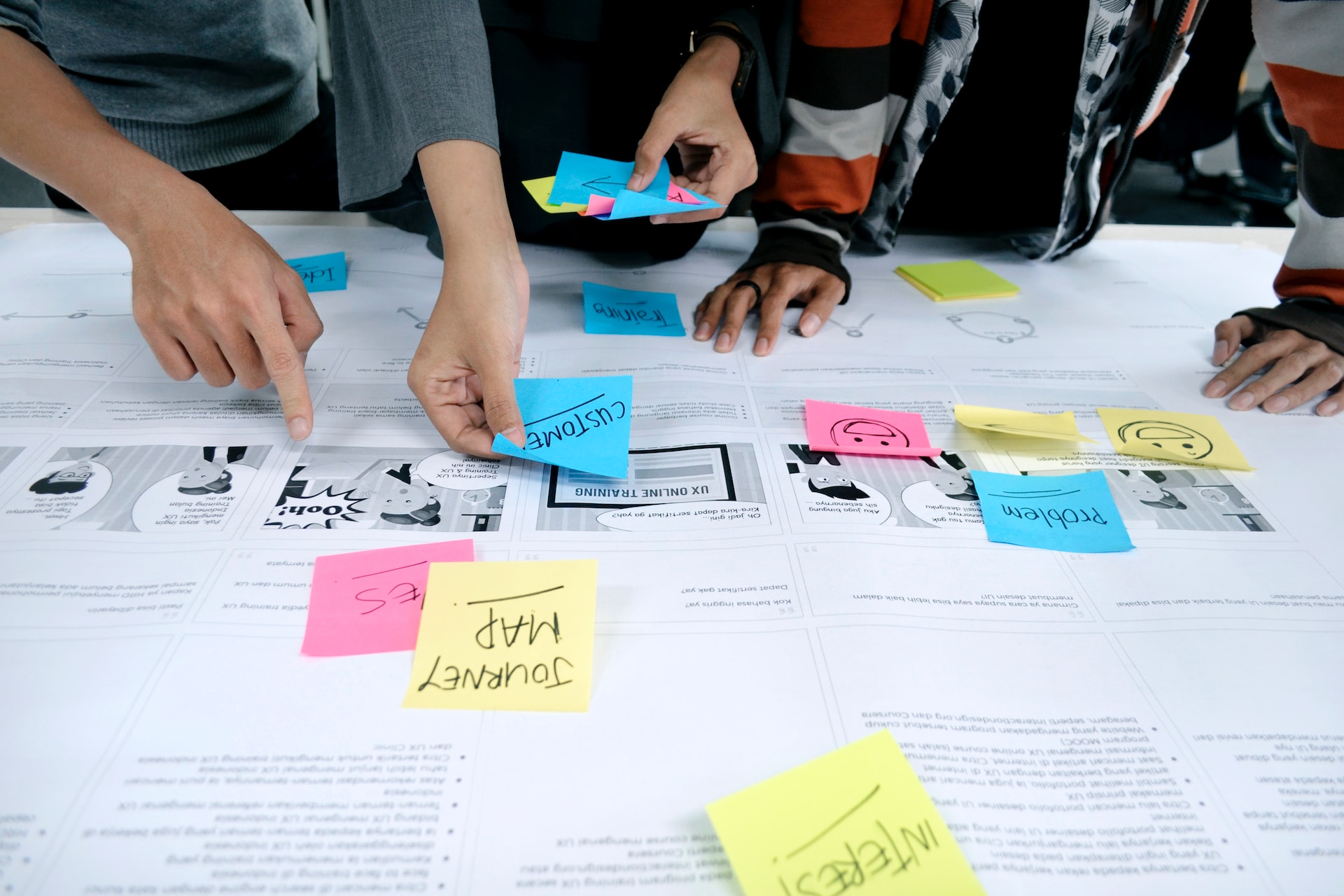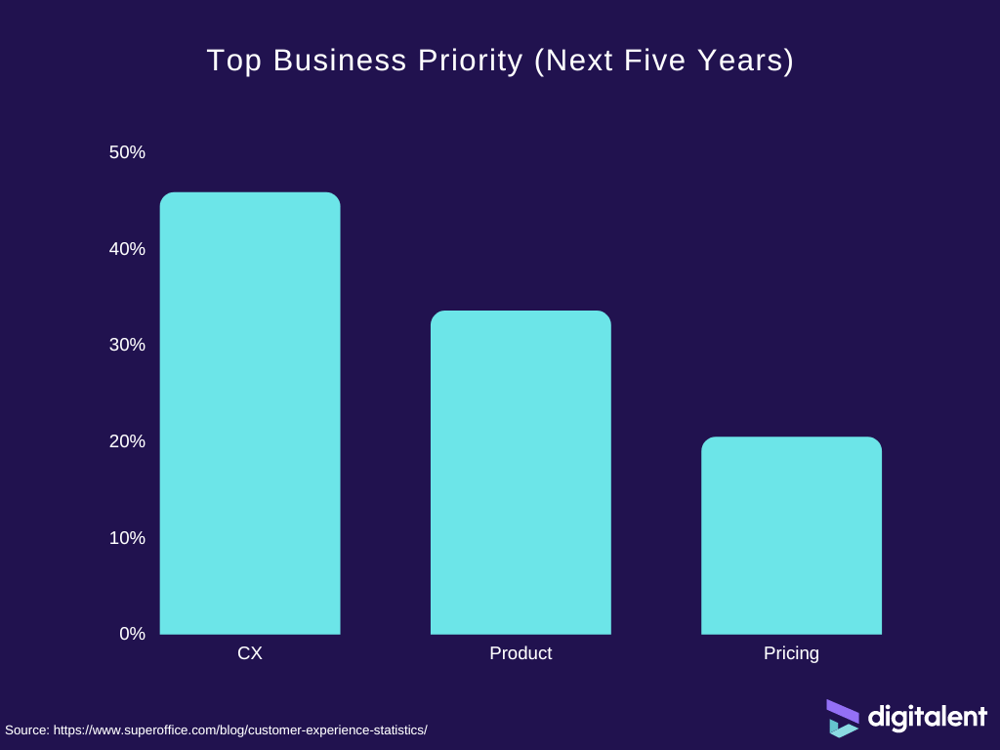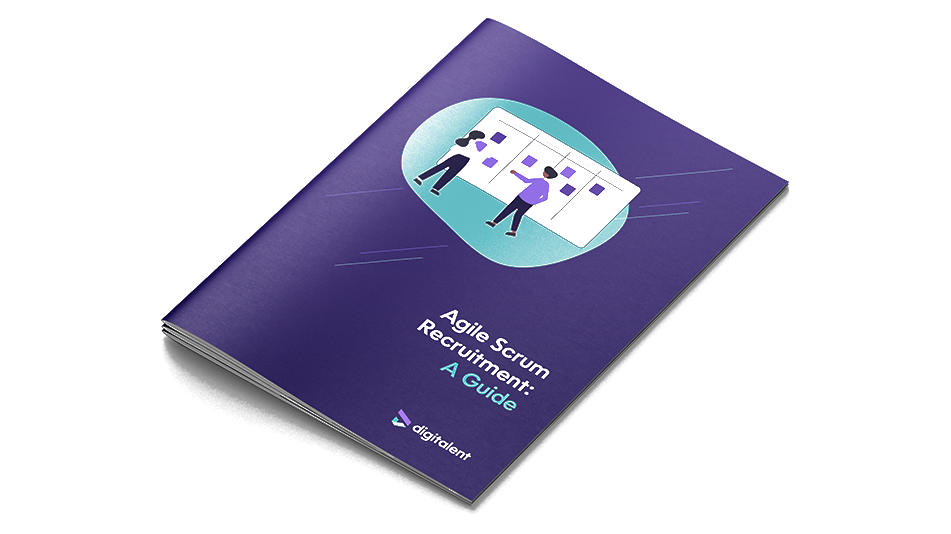
Creating an exceptional customer experience has become a vital aspect of success for businesses in today's competitive landscape. A great customer experience (CX) team plays a pivotal role in driving customer satisfaction, loyalty, and ultimately, business growth.
In fact, according to a study, companies with highly effective customer experience teams outperform their competitors by 84%. Meanwhile, companies that focus on CX can see revenue increases of up to 80%. These statistics highlight the significance of investing in a skilled and dedicated CX team.
In this blog post, we’ll guide you through the process of building a winning customer experience team, from defining roles and responsibilities to sourcing and hiring the right talent.
Let's dive in!
What is a Customer Experience Team?
A customer experience team is a dedicated group of individuals within a business whose primary objective is to ensure that customers have positive and memorable interactions with the company at every stage. This team plays a crucial role in shaping and delivering a seamless customer journey that exceeds expectations.
Customer experience refers to the overall perception a customer has of a company based on their interactions and engagement throughout the customer journey. It encompasses every touchpoint, from the initial point of contact to post-purchase support, and encompasses various aspects such as product quality, service, usability, and personalisation.
The CX team works collaboratively across different departments to design, implement, and optimise strategies, processes, and initiatives that enhance the overall customer experience. They gather valuable insights through customer feedback and data analysis to identify pain points, anticipate customer needs, and develop solutions that drive customer satisfaction and loyalty.
By focusing on creating exceptional experiences, the CX team helps businesses build stronger relationships with their customers, differentiate themselves from competitors, and ultimately foster long-term success.
That’s perhaps why a 2023 survey found that almost 46% of businesses say that their top priority over the next five years is customer experience - ahead of things like product (34%) and pricing (21%).

Understanding the Key Components of a Successful Customer Experience Team
A successful customer experience team comprises various roles and responsibilities, each playing a crucial part in delivering exceptional customer experiences.
Let's explore some of the key roles within a CX team and why they are important:
Customer Service Representatives
- Act as the primary point of contact for customers, addressing their inquiries, concerns, and issues promptly and efficiently.
- Provide friendly and empathetic assistance, demonstrating excellent communication and problem-solving skills.
- Offer personalised support to ensure customers feel valued and their needs are met.
Product Specialists
- Possess in-depth knowledge of the company's products or services, understanding their features, benefits, and use cases.
- Guide customers in making informed decisions by providing accurate and relevant information about products.
- Collaborate with other teams, such as sales and marketing, to gather customer insights and provide input for product improvements.
Experience Designers
- Craft a seamless and intuitive customer journey by mapping out touchpoints and identifying pain points or areas of improvement.
- Conduct research and gather customer feedback to gain insights into user preferences and expectations.
- Collaborate with cross-functional teams to design user-friendly interfaces, intuitive navigation, and engaging experiences.
Data Analysts
- Collect and analyse customer data to uncover patterns, trends, and actionable insights.
- Identify opportunities to enhance the customer experience based on data-driven findings.
- Monitor key metrics and measure the impact of customer experience initiatives to drive continuous improvement.
Customer Success Managers
- Build strong relationships with key customers, understanding their goals and aligning company resources to help them succeed.
- Proactively identify opportunities for upselling, cross-selling, and fostering customer loyalty.
- Serve as advocates for customers within the company, ensuring their voices are heard and their needs are prioritised.
Each role within the CX team brings unique skills and perspectives that collectively contribute to creating exceptional customer experiences.
By collaborating effectively and leveraging their expertise, these team members can ensure that customers receive the support, guidance, and memorable interactions they seek, fostering long-lasting relationships and driving business growth.
Identifying the Right Talent
Building a successful CX team requires finding creative individuals with the right skills, qualities, and mindset. Here's how you can identify and attract the right talent:
Skills and Qualities
- Communication Skills: Look for candidates who possess excellent verbal and written communication skills to effectively engage with customers and colleagues.
- Empathy: Seek individuals who can understand and empathise with customers' needs, demonstrating the ability to provide personalised support and exceptional service.
- Problem-Solving Abilities: Look for candidates who can think critically, analyse situations, and offer creative solutions to resolve customer issues effectively.
Effective Sourcing and Attraction
- Use Social Media: Leverage platforms like LinkedIn, Twitter, and professional communities to showcase your company's values, culture, and available positions.
- Networking: Attend industry events, conferences, and meetups to connect with potential candidates and build relationships.
- Employee Referrals: Encourage your current employees to refer suitable candidates. Employee referrals often result in high-quality hires due to the endorsement of trusted individuals.
- Recruitment Agencies: Consider partnering with a creative recruitment agency that specialises in customer experience roles. They can help streamline the hiring process and provide access to a broader talent pool.
Importance of Diversity and Inclusion
Building a diverse and inclusive customer experience team is crucial for understanding and serving a broad range of customer needs. Diversity brings a variety of perspectives, experiences, and ideas, which can lead to innovative solutions and better customer insights. Embrace diversity by actively seeking candidates from different backgrounds, cultures, genders, and abilities. Foster an inclusive environment where all team members feel valued, respected, and empowered to contribute their unique perspectives.
Remember to prioritise cultural fit during the hiring process. Look for individuals who align with your company's values and exhibit a genuine passion for delivering exceptional customer experiences. Consider incorporating behavioural and situational questions during interviews to assess candidates' customer-centric mindset and problem-solving abilities.
By effectively sourcing and attracting the right talent, with a focus on skills, qualities, and diversity, you can build a customer experience team that is equipped to meet customer expectations and drive business success.
Developing Your Customer Experience Team
Training and development are essential for building a successful customer experience team. Here's how you can develop your team effectively:
Importance of Training and Development
Providing comprehensive training and continuous development opportunities ensures that your customer experience team members have the knowledge, skills, and confidence to excel in their roles. It empowers them to deliver exceptional service, handle challenges effectively, and adapt to evolving customer needs.
Creating an Effective Training Program
Offering training is good – but it has to be worth it. Here are some ways you can create effective training for your team.
- Role-Playing Exercises: Use role-playing exercises to simulate real-life customer interactions. This allows team members to practise handling various scenarios, improve their communication skills, and build confidence in resolving customer issues.
- Product and Service Knowledge: Offer thorough training on your products and services to ensure that team members have a deep understanding. This knowledge enables them to provide accurate information and deliver personalised recommendations.
- Ongoing Coaching and Feedback: Provide regular coaching sessions and constructive feedback to help team members enhance their skills. Offer individualised support, identify areas for improvement, and celebrate successes to foster continuous growth.
- Customer Journey Mapping: Conduct workshops or training sessions on customer journey mapping. This helps team members gain insights into the customer experience lifecycle, identify pain points, and collaborate on solutions to enhance the overall journey.
Setting Clear Goals and Metrics
Establishing clear goals and metrics is crucial for tracking the success of your CX team. Metrics such as customer satisfaction scores, Net Promoter Score (NPS), and average response time can provide valuable insights. Ensure team members understand these metrics and how their performance contributes to achieving them. Regularly review progress and provide transparent feedback to align efforts with the desired outcomes.
Encourage a culture of continuous learning and improvement within the team. Provide access to relevant training resources, industry publications, and professional development opportunities. Foster an environment where team members feel encouraged to share their knowledge and experiences, promoting collaboration and collective growth.
By investing in training and development, creating an effective program, and setting clear goals and metrics, you can nurture a high-performing customer experience team that consistently exceeds customer expectations and drives business success.
Fostering a Culture of Collaboration
Creating a collaborative culture within your team is vital for driving success and delivering outstanding customer experiences. Here's how you can foster collaboration:
Importance of Collaboration
Collaboration encourages the sharing of ideas, knowledge, and expertise among team members. It allows for a holistic approach to problem-solving and ensures that the collective intelligence of the team is used. By fostering collaboration, you can leverage diverse perspectives, enhance creativity, and achieve better outcomes for both customers and the business.
Tips to Foster Collaboration
Follow these simple ways to boost collaboration within your CX department.
- Regular Team Meetings: Conduct regular team meetings to provide a platform for open discussions, idea sharing, and updates on ongoing projects. Encourage active participation and create an inclusive environment where every team member feels comfortable expressing their thoughts.
- Cross-Functional Communication: Promote cross-functional communication by facilitating interactions between your CX team and other departments such as product, marketing, and sales. Encourage knowledge sharing, collaboration on initiatives, and joint problem-solving to improve overall customer experience.
- Collaboration Tools: Use digital collaboration tools such as project management platforms, communication channels, and shared document repositories. These tools streamline communication, enable real-time collaboration, and foster teamwork, especially in remote or distributed work environments.
- Team-Building Activities: Organise team-building activities that promote bonding, trust, and camaraderie. This can include team outings, workshops, or virtual team-building exercises that encourage collaboration and strengthen relationships among team members.
Recognising and Rewarding Contributions
Recognising and rewarding team members for their contributions is essential for fostering a collaborative culture. Celebrate individual and team achievements, whether it's exceeding customer satisfaction targets, implementing innovative solutions, or going above and beyond to support colleagues. Publicly acknowledge their efforts, provide positive feedback, and offer incentives or rewards to reinforce the value of collaboration.
Encourage a culture of shared responsibility and mutual support within the team. Encourage team members to seek input from colleagues, actively listen, and provide constructive feedback. Emphasise the importance of collaboration as a core value of the team and recognise that everyone's contributions contribute to the team's success.
By fostering a collaborative culture, you empower your customer experience team to work together, leverage collective strengths, and deliver exceptional customer experiences that exceed expectations.
Measuring the Success of Your CX Team
To gauge the success of your customer experience team, it's important to track relevant metrics and use suitable tools and technology. Here are some key metrics to consider:
- Customer Satisfaction (CSAT): Measure customer satisfaction through surveys, feedback forms, or post-interaction ratings. This provides insights into how well your team is meeting customer expectations.
- Churn Rate: Monitor the rate at which customers churn or discontinue their relationship with your business. A lower churn rate indicates that your team is effectively retaining customers and delivering a positive experience.
- Customer Engagement: Assess the level of customer engagement, such as the frequency of interactions, time spent on your website or app, and participation in loyalty programs. Increased engagement signifies an effective CX strategy.
- Net Promoter Score (NPS): Determine the likelihood of customers recommending your brand. A higher NPS indicates greater customer loyalty and satisfaction.
- First Contact Resolution (FCR): Measure the percentage of customer issues or queries resolved during the first interaction. A higher FCR indicates efficient problem-solving and customer-centric support.
There are also a range of tools and technology assets you can use to help with measuring success, including:
- Customer Feedback and Survey Tools: Platforms like SurveyMonkey, Qualtrics, or Google Forms enable you to collect feedback and measure customer satisfaction.
- Customer Relationship Management (CRM) Systems: CRM tools like Salesforce, HubSpot, or Zendesk provide comprehensive customer data and analytics to track metrics and monitor customer interactions.
- Voice of Customer (VoC) Analytics: VoC tools like Medallia, Qualtrics, or Verint capture and analyse customer feedback across multiple channels, offering actionable insights.
- Social Listening Tools: Tools like Hootsuite, Sprout Social, or Brandwatch allow you to monitor social media platforms for customer sentiments and mentions.
- Customer Analytics Platforms: Analytics tools such as Google Analytics or Adobe Analytics provide valuable data on customer behaviour, engagement, and conversion rates.
By leveraging these metrics and employing suitable tools, you can assess the success of your CX team, identify areas for improvement, and make data-driven decisions to enhance the overall customer experience.
Hire the Right People For Your CX Team
Building a winning customer experience team is crucial for businesses aiming to excel in today's competitive landscape.
By investing in a customer experience team, businesses can create exceptional experiences, drive customer loyalty, and ultimately achieve long-term success. That can only happen if you hire the right people.
For further recruitment support get in touch with us today.
